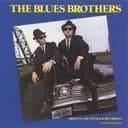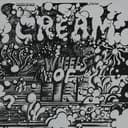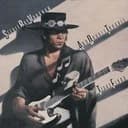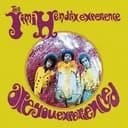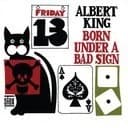The C♭ Blues Scale exists purely as an enharmonic spelling of the B Blues Scale, demonstrating how Western musical notation can represent the same pitches with different letter names. In practice, C♭ notation creates significant readability challenges because it requires double flats: D♭♭ (which sounds like C) and A♭♭ (which sounds like G). These double-flat spellings, while theoretically correct for maintaining the scale degree sequence (root, ♭3, 4, ♭5, 5, ♭7), make the notation unnecessarily complex for performers. The blues scale emerged from African-American musical traditions in the Deep South during the late 19th and early 20th centuries, where pitch was often conceived in terms of sound and feeling rather than precise Western notation. The "blue note"—the ♭5 (F♭/E in C♭ blues)—represents a deliberate pitch ambiguity that doesn't fit neatly into diatonic theory. Blues musicians traditionally "bend" this note, creating microtonal inflections between the perfect 4th and perfect 5th that evoke the vocal slides and emotional expressiveness central to blues tradition. When encountering music in flat keys with many accidentals, composers choose the enharmonic spelling that produces the clearest notation for performers, which is why B blues (with its natural notes and single sharps/flats) is universally preferred over C♭ blues.
Enharmonic Equivalence and Notation
Understanding the relationship between C♭ and B blues scales illuminates fundamental concepts in music theory about how we name pitches versus how they sound. Enharmonic equivalents are notes that sound identical but have different names—for example, C♭ and B, or D♭♭ and C. The C♭ Blues Scale (C♭-D♭♭-E♭♭-F♭-G♭♭-A♭♭) sounds exactly the same as the B Blues Scale (B-D-E-F-F♯-A) on any equal-tempered instrument like piano or guitar. The choice between these spellings depends entirely on musical context and notation clarity. In keys with many flats (like G♭ major or D♭ major), a composer might theoretically spell a blue note as C♭ if it functions as a lowered scale degree within that key's harmonic framework. However, even in these flat-heavy contexts, musicians typically prefer simpler enharmonic spellings when possible. This preference for practical readability over theoretical purity reflects the pragmatic nature of musical notation, which exists primarily to communicate sonic intent to performers. When practicing or analyzing music, recognize that seeing C♭ blues notation indicates either an unusual harmonic context or an academic exercise—in either case, think of it as B blues with an alternative spelling.
How to Use the Blues Scale for Improvisation
Whether spelled as C♭ or B, this blues scale excels in improvisation over blues progressions, particularly the standard 12-bar blues form. The scale works remarkably well over all three chords in a blues progression (I7, IV7, V7), making it accessible for beginning improvisers who don't want to navigate complex chord changes. In the context of C♭/B blues, you would use this scale over a 12-bar blues in C♭/B (C♭7-F♭7-C♭7-G♭7-F♭7-C♭7, or more practically: B7-E7-B7-F♯7-E7-B7). When soloing, emphasize the blue note (F♭, which sounds as E) by approaching it from either direction and resolving to E♭♭ (D) or G♭♭ (F)—this creates the signature "blues lick" sound heard in countless classic recordings. Experiment with rhythmic variations, triplet figures, and call-and-response patterns to develop authentic blues phrasing. The scale also functions effectively over dominant seventh chords in rock, funk, and jazz contexts. For more harmonic sophistication, combine the blues scale with the C♭ Minor Pentatonic (or more practically, B Minor Pentatonic) or B Dorian mode, switching between them to add melodic variety.
Blues Scale vs Minor Pentatonic
The C♭ Blues Scale and C♭ Minor Pentatonic Scale (or their more practical B equivalents) are nearly identical, with the blues scale containing just one additional note: the ♭5. The C♭ Minor Pentatonic consists of C♭-E♭♭-F♭-G♭♭-A♭♭ (sounding as B-D-E-F-A), while the blues scale adds F♭ (E) between F♭ and G♭♭, creating C♭-E♭♭-F♭-F-G♭♭-A♭♭ (sounding as B-D-E-F-F♯-A). This single chromatic note transforms the scale's character from the minor pentatonic's stable, consonant sound to the blues scale's edgier, more expressive quality. Many blues and rock musicians use both scales interchangeably, treating the ♭5 as an optional passing tone or target note for emphasis. The blues scale can be thought of as "minor pentatonic plus the blue note," making it easy to incorporate into existing pentatonic-based improvisations. When practicing, start with the minor pentatonic framework and gradually introduce the F/F♯ (depending on your chosen spelling), listening carefully to how it adds tension and release to your melodic phrases. Remember that regardless of how you spell it on paper, your ears hear the same intervals and emotional content.
Common Blues Progressions and Applications
The C♭ Blues Scale (practically performed as B blues) works perfectly over the classic 12-bar blues progression, the foundational harmonic structure of blues music. In C♭/B, this progression follows the pattern: C♭7/B7 (4 bars) - F♭7/E7 (2 bars) - C♭7/B7 (2 bars) - G♭7/F♯7 (1 bar) - F♭7/E7 (1 bar) - C♭7/B7 (2 bars). The I-IV-V chord movement creates tension and resolution that the blues scale navigates effortlessly, as every note in the scale relates harmonically to all three dominant seventh chords. Beyond the 12-bar form, the blues scale also works over simpler one-chord vamps (B7 or Bm7 grooves), the "quick-change" blues variation (IV7 chord in bar 2), and extended jazz-blues progressions that incorporate ii-V-I turnarounds. Practice playing the scale over these progressions while emphasizing chord tones on strong beats to create melodic lines that outline the harmony. The blues scale's versatility extends beyond traditional blues into rock, funk, soul, and contemporary pop music that borrows from blues harmonic vocabulary. Artists working in the key of B (rarely notated as C♭) include countless blues, rock, and jazz musicians who have made this sound a cornerstone of popular music.
Famous Applications and Artists
The blues scale in this key (performed as B blues rather than C♭) has been the secret weapon of countless legendary musicians across multiple generations and genres. B.B. King built his entire guitar vocabulary around blues scales, using minimal notes to maximum emotional effect with his signature vibrato and precise bending techniques. Eric Clapton's iconic "Crossroads" solo demonstrates the blues scale's power in high-energy rock contexts, while Stevie Ray Vaughan's "Pride and Joy" showcases its application in Texas blues shuffle rhythms. Jazz musicians like Miles Davis incorporated blues scales into modal jazz explorations, proving the scale transcends its folk origins. In rock, guitarists from Jimmy Page to Slash have relied on blues scale patterns to create memorable riffs and solos. Contemporary artists continue this tradition—John Mayer's blues-rock fusion and Gary Clark Jr.'s modern blues approach both draw heavily on blues scale vocabulary. The scale's influence extends to R&B and soul, where vocalists use blue note inflections to add emotional nuance to melodies. Understanding the blues scale connects you directly to this rich musical lineage and provides a foundation for developing authentic, expressive improvisation across multiple styles, regardless of whether you notate it as C♭ or B.
